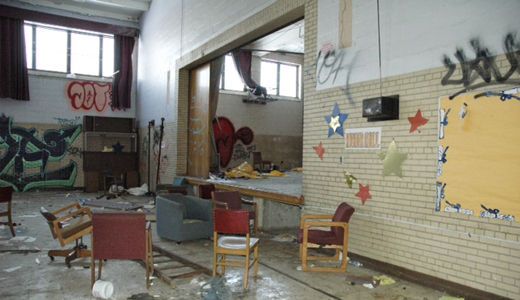
CHICAGO – Fresh from closing 50 schools and laying off 850 teachers and staff, Chicago Public Schools (CPS) informed principals June 14 they face a new round of devastating cuts forcing layoffs of hundreds more educators and personnel.
Many elementary schools will suffer cuts in the hundreds of thousands of dollars, and numerous high school budgets have been slashed between $1-$3 million.
The cuts, described as “horrific,” amount to 10-25 percent per school, said Wendy Katten, a spokesperson with the parent group Raise Your Hand.
CPS had promised the historic school closures would result in providing the merged and remaining schools with adequate resources. But the announcement sent school communities into shock and turmoil, scrambling to make choices over what to cut and pitting school personnel against each other to see who would go.
On June 6, CPS announced new rules that give increased “flexibility” to principals and ultimately the Local School Councils to allocate funds, but places the onus on them to make the cuts.
The Chicago Teachers Union (CTU), parents and students blasted the cuts and have demanded alternative funding revenues be tapped.
Kenneth Fitzner, principal at Audubon Elementary School, told DNAInfo.org “When I saw these numbers, my jaw dropped. These are below state foundations.”
Fitzner said the cuts would result in class sizes of 35-47 students. If one of two seventh grade teachers were eliminated, the resulting homeroom would have 61 students.
CPS now defines a class size of 35 students as normal “utilization.”
The cuts are so deep some schools are considering steps that would essentially eliminate libraries, at a time when there are already 160 schools without libraries.
In addition, the cuts could gut guidance counseling departments, physical education and art and music programs and physical improvements like air conditioning.
Program funding for the longer school day, a move trumpeted by Mayor Rahm Emanuel as a huge educational advancement, was eliminated.
Children entitled to special education services may feel the worst impact. As the CTU noted, “At Blair Elementary, seven special education teachers, one general education teacher and close to eight paraprofessional positions will be slashed by a nearly 75 percent cut to their budget.
“At Northside Learning Center, a school that serves students with cognitive disabilities, eight special education instructors and 14 teacher aides will be lost.”
The cuts are based on a new funding formula. CPS spokeswoman Becky Carroll said the per pupil rates for next year will be $4,429 per student in kindergarten through third grade, $4,140 per student in 4th through 8th grade, and $5,029 per student in high school.
This year, charter schools had per pupil rates of $6,070 per elementary student and $7,587 per high school student.
In contrast, New Trier, one of the wealthiest school districts in Illinois allocates $20,807 per student.
Emanuel warned cuts were necessary because CPS is facing a $1 billion budget deficit, most of which he blamed on teacher pensions.
CPS and CTU had negotiated a “pension holiday” and new schedule for payments into the system. But the deal was scuttled when the state legislature couldn’t agree on an overall plan to resolve the public worker pension crisis.
However, CTU president Karen Lewis told the City Club that Emanuel won’t join forces to end TIF payments, close corporate tax loopholes, end costly “toxic swap” deals with Wall Street banks and fight for a progressive state income tax.
Lewis said K-12 educational cutbacks in recent years are approximately equal to the amount of state taxes left unpaid by the largest 155 corporations.
Lewis also blasted TIF funding, property tax money meant for schools and parks but legally channeled to wealthy interests. TIF funds amount to $500 million per year, most of which ends up aiding downtown developers.
“Since 2000, nearly $100 million of TIF funds have been given to corporations to move their corporate offices to the (downtown) Loop or keep them in the city,” she said.
“A combined Chicago city-income and commuter-progressive tax between just 0.5 percent and 1.5 percent can generate close to a $1 billion for the city, with half going to CPS. Imagine if CPS had $600 million more in revenue in addition to nearly $300 million a year from TIFs and Swaps?”
In addition, CTU is calling for passage of a Financial Transaction Tax that could raise an estimated $10-13 billion per year.
Photo: CPS school closings leave trails of destruction. (Bronzeville/Stephanie Gadlin)










